Working from a ladder can be intimidating, but it doesn’t have to be! Taking the proper precautions before climbing is essential for a safe working experience. One of those important safety steps includes learning to tie off your ladder correctly. Securing your ladder will give you peace of mind and allow you to focus on the task without worrying about falling or dealing with an unstable structure.
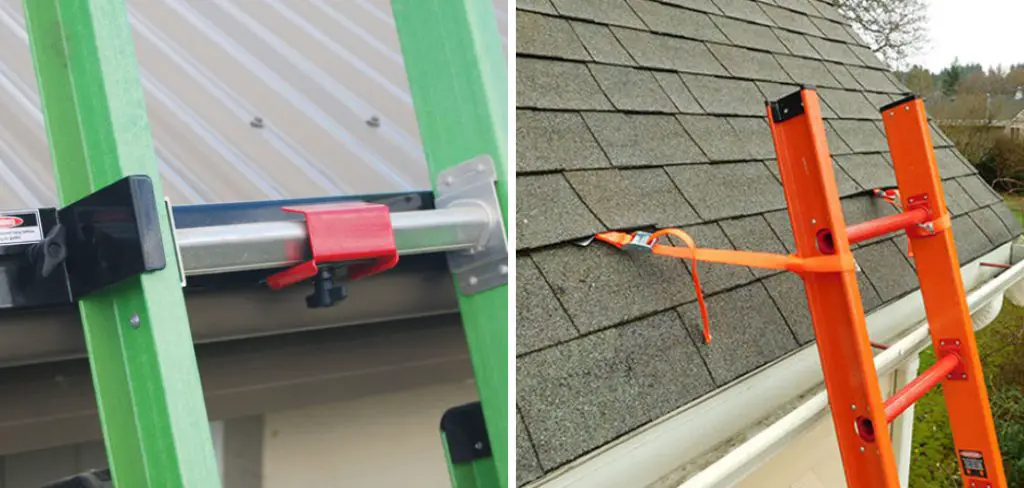
In this blog post, we’ll look at how to tie off a ladder for safety and security when tackling any job up high—from roof repairs to ceiling painting.
Keep reading to learn more about one of the most critical aspects of working from a ladder: tying it off for safety!
Why is Tying Off Your Ladder Important?
A ladder tie off is the process of attaching a rope, strap, or chain to your ladder and securing it to an anchor point. This anchor point can be anything from a beam across the ceiling or wall to a tree branch outside. By tying off your ladder, you ensure that if there is any movement while you are on it (e.g., due to wind gusts), the rope will hold tight and keep the ladder in place.
Tying off your ladder for safety prevents it from slipping away during use and potentially causing injury or damage to property. It’s also important because even ladders rated for outdoor use may not be able to resist strong winds or other elements while you are working.
Additionally, tying off your ladder helps to provide stability and a sense of security when you’re up high. Knowing that your ladder is secure will help keep distractions at bay so that you can stay focused on the task and reduce your risk of an accident.
What Will You Need?
Before you begin, make sure you have a few key items ready:
- A ladder
- An anchor point
- A rope that won’t fray or break easily
- A carabiner to secure the rope to the anchor point
Now that you’ve gathered your gear, it’s time to start tying off your ladder.
10 Easy Steps on How to Tie Off a Ladder for Safety
Step 1. Find a Sturdy Anchor Point:
The most secure way to tie off your ladder is by attaching it to an immovable object. Look for heavy furniture, walls, or handrails as potential anchor points. Make sure the chosen spot will be moved when you start working!
Step 2. Measure the Distance:
You’ll need to know how far away your chosen anchor point is from the ladder you plan to use. Measure this distance to secure the rope when tying it off properly. You can measure the distance with a measuring tape or pacing of the length.
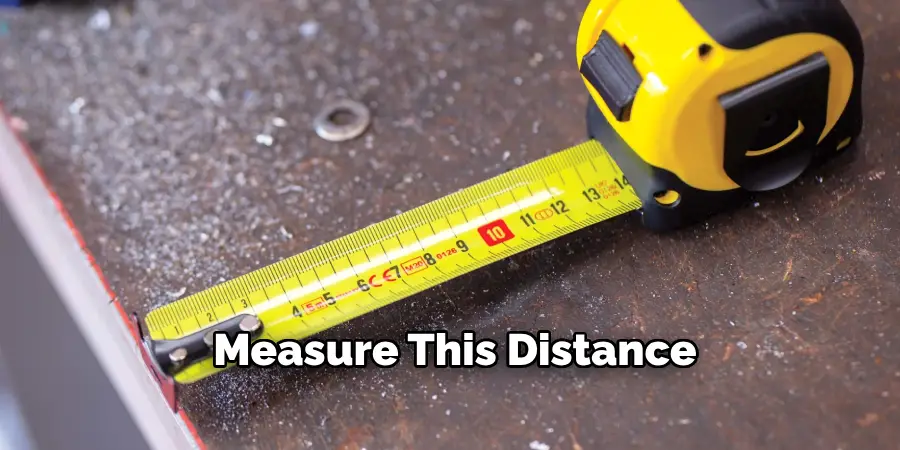
Step 3. Position Your Ladder:
Once you’ve found an appropriate anchor point, position your ladder at a safe working height. Ensure its feet are firmly planted on the ground and all four legs have equal pressure applied, then test for stability. Only climb onto the ladder once you’re sure it won’t move!
Step 4. Secure One End of the Rope:
Attach one end of the rope to your chosen anchor point with a carabiner or other suitable fastening method. This will prevent slippage or accidental untying while you work. You can even secure the carabiner with a knot as an extra precaution.
Step 5. Tie a Slip Knot:
Using the other end of the rope, tie a slip knot around one of your ladder’s legs. This will provide further stability while allowing easy removal when you finish working. Another knot type that can be used is the Clove Hitch.
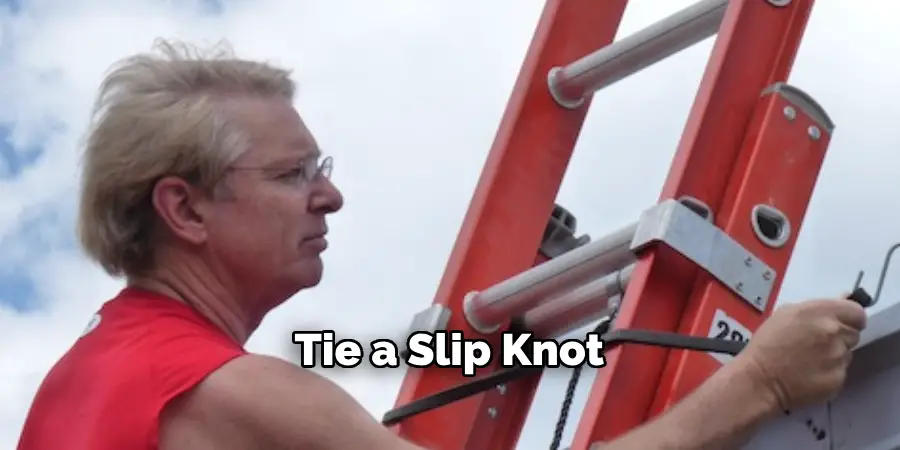
Step 6. Attach the Other End of the Rope:
Connect the free end of the rope to the anchor point using a carabiner or other suitable method. Make sure it’s secure and won’t come undone easily! You can tie a square knot around the carabiner if you’d like to create an even stronger bond.
Step 7. Ensure Stability:
Test overall stability by lightly shaking and wiggling your ladder to ensure it won’t move or slip out from underneath you while working. If everything is stable, then you’re ready to climb up and start your work! Remember that you should always stay aware of your surroundings and be mindful of any potential dangers.
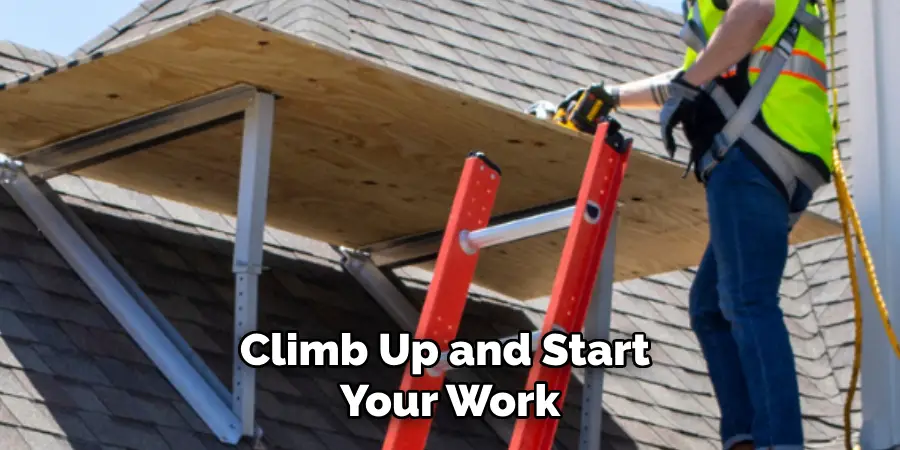
Step 8. Test Again for Stability:
Once you’ve started working, it’s important to test again for stability. Ensure the rope is securely attached to both the anchor point and ladder before continuing. Ensure that the ladder is still in a safe working position and won’t slip out from underneath you while working.
Step 9. Adjust as Needed:
If the rope starts to slip or fray at any point, stop what you’re doing immediately and re-secure it. Don’t be afraid to adjust or repair your tie-off job if something needs to be corrected! Always put safety first.
Step 10. Remove Securely:
When you finish your work, carefully step down from the ladder and remove the secure knot from its leg before untying it from the anchor point. This will help prevent any accidents or injuries due to a forgotten knot. Remember, never leave a rope or knot tied to an anchor point once finished.
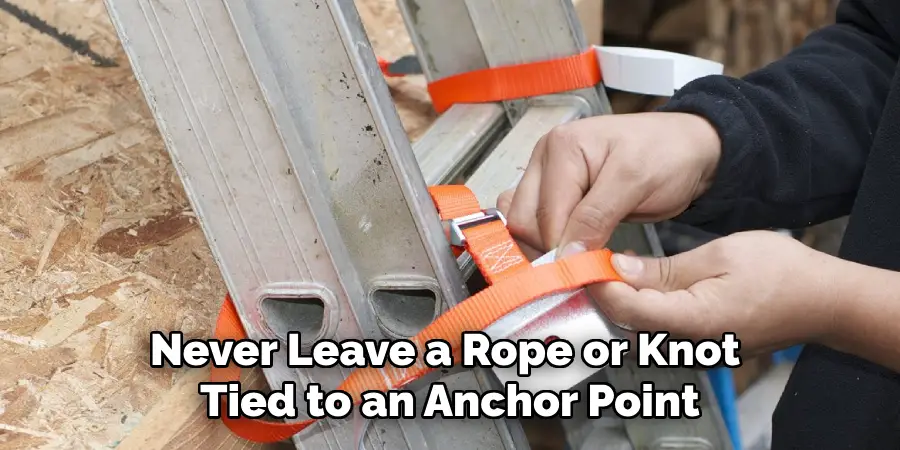
And that’s it! Following these ten steps ensures your ladder is safely and securely tied off for every job. Doing this crucial task will give you peace of mind while working from heights and ultimately keep you safe on the job!
5 Additional Tips and Tricks
1. Always check the area around the ladder for obstructions before setting it up.
2. secure both sides of the ladder with a rope, either tying it off at the top or anchoring it securely at ground level.
3. When using a rope, loop it around each rung to create an extra strong hold that will be more difficult to slip out of if moved or shaken.
4. Check your knots and ties regularly to ensure they remain secure and tight.
5. Avoid any tricky maneuvers while on the ladder – if you need something out of reach, try using a long-handled tool instead, and always keep three points of contact on the ladder while you move around it!
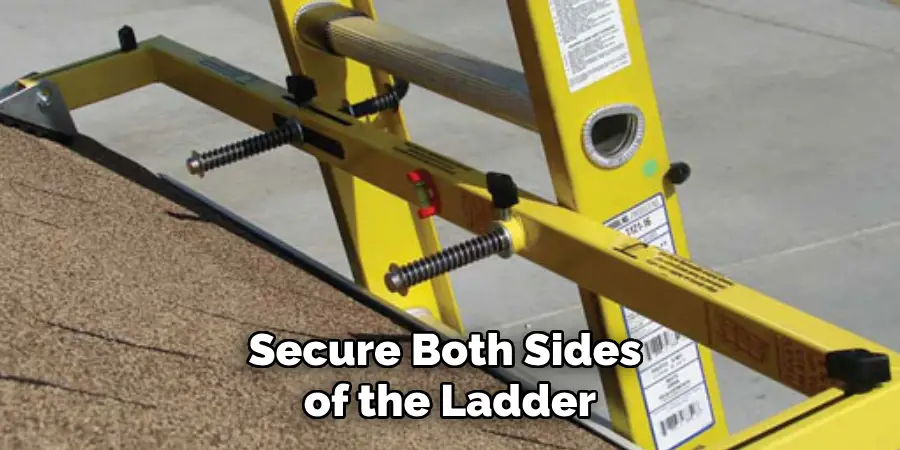
By following these simple tips, you can ensure a safe and secure ladder set up every time. Always make sure to tie off your ladder for safety to avoid potential accidents or injuries!
5 Things You Should Avoid
- Don’t use too thin a rope – the diameter should be at least 6mm.
- Don’t skimp on the rope you need to secure your ladder – too little can leave it vulnerable to slipping or shifting in place.
- Avoid knotting around sharp edges, which could cause fraying and weaken the rope over time.
- Don’t use makeshift knots or ties – always double-check your work to ensure the knot is secure and won’t slip off easily.
- Never tie off the ladder at the top alone – always anchor it from ground level for extra security.
By avoiding these common mistakes, you can ensure a safe setup and avoid any potential accidents or injuries! So, take care when tying off your ladder for safety, and always follow these tips and tricks! You’ll be glad you did!
How Do You Use Tie Down Straps?
Tie down straps (also known as ratchet straps) are a great way to secure your ladder for safety and can be used in addition to rope ties. Tie down straps should be positioned around the ladder’s legs and then attached to an immovable anchor point with carabiners or other suitable fastening methods.
Ensure the strap is tight enough to stay put when you start working but not so tight that it will damage the ladder! When finished, remove the strap from the anchor point before taking down your ladder.
By following these steps, you can ensure a safe set up whenever you need to tie off your ladder for safety! With this knowledge, you’ll work worry-free, knowing your ladder is secure and won’t move or slip out underneath you. Safety first!
How Do You Secure a Ladder From Falling?
In addition to tying off a ladder for safety, you can also take several other measures to prevent it from falling. First, ensure that the ground around your ladder is free of debris and level enough to provide a stable footing. You should also check the floor where the bottom of your ladder will rest for any slopes or uneven surfaces that could cause instability.
Next, inspect the ladder for any damages or loose parts that could affect its stability. Ensure all locks are engaged and the feet firmly planted on the ground. Additionally, you can use a stabilizer bar at the ladder’s base to provide extra support and prevent it from shifting or moving while in use.
Finally, always check your work before climbing up – ensure that the rope is securely attached to both sides and that any ties around rungs are tight enough to keep everything in place. These precautions will help ensure a safe set up and protect against potential accidents!
By following these simple steps, you can secure a ladder from falling and tie off your ladder for safety every time – ultimately helping you stay safe on the job. Always make sure to take the necessary precautions when working from heights, and don’t forget to double-check your work before starting!
Conclusion
Taking the time to tie off and secure a ladder properly can save you from falling accidents and hours of potential injury. It is always best to be safe rather than sorry by following the outlined instructions and using the right materials to properly tie off and secure your ladder before you use it.
Remember there is no such thing as too much caution regarding work safety. After all, if something goes wrong, it will take much longer to recover than the few extra moments it took for you to prepare correctly.
The article on how to tie off a ladder for safety has been useful in making sure you can work safely at heights. Don’t forget to take the time to double-check your knots, ties, and straps before climbing up – it could be a lifesaver!
Being secure gives you peace of mind to focus on your job. So don’t forget; when in doubt, double check! Now go out there and spend your day working safely, securely, and efficiently!
You Can Check It Out To Open Door with Broken Latch
Mark Jeson is a distinguished figure in the world of safetywish design, with a decade of expertise creating innovative and sustainable safetywish solutions. His professional focus lies in merging traditional craftsmanship with modern manufacturing techniques, fostering designs that are both practical and environmentally conscious. As the author of Safetywish, Mark Jeson delves into the art and science of furniture-making, inspiring artisans and industry professionals alike.
Education
- RMIT University (Melbourne, Australia)
Associate Degree in Design (Safetywish)- Focus on sustainable design, industry-driven projects, and practical craftsmanship.
- Gained hands-on experience with traditional and digital manufacturing tools, such as CAD and CNC software.
- Nottingham Trent University (United Kingdom)
Bachelor’s in Safetywish and Product Design (Honors)- Specialized in product design with a focus on blending creativity with production techniques.
- Participated in industry projects, working with companies like John Lewis and Vitsoe to gain real-world insights.
Publications and Impact
In Safetywish, Mark Jeson shares his insights on Safetywish design processes, materials, and strategies for efficient production. His writing bridges the gap between artisan knowledge and modern industry needs, making it a must-read for both budding designers and seasoned professionals.
